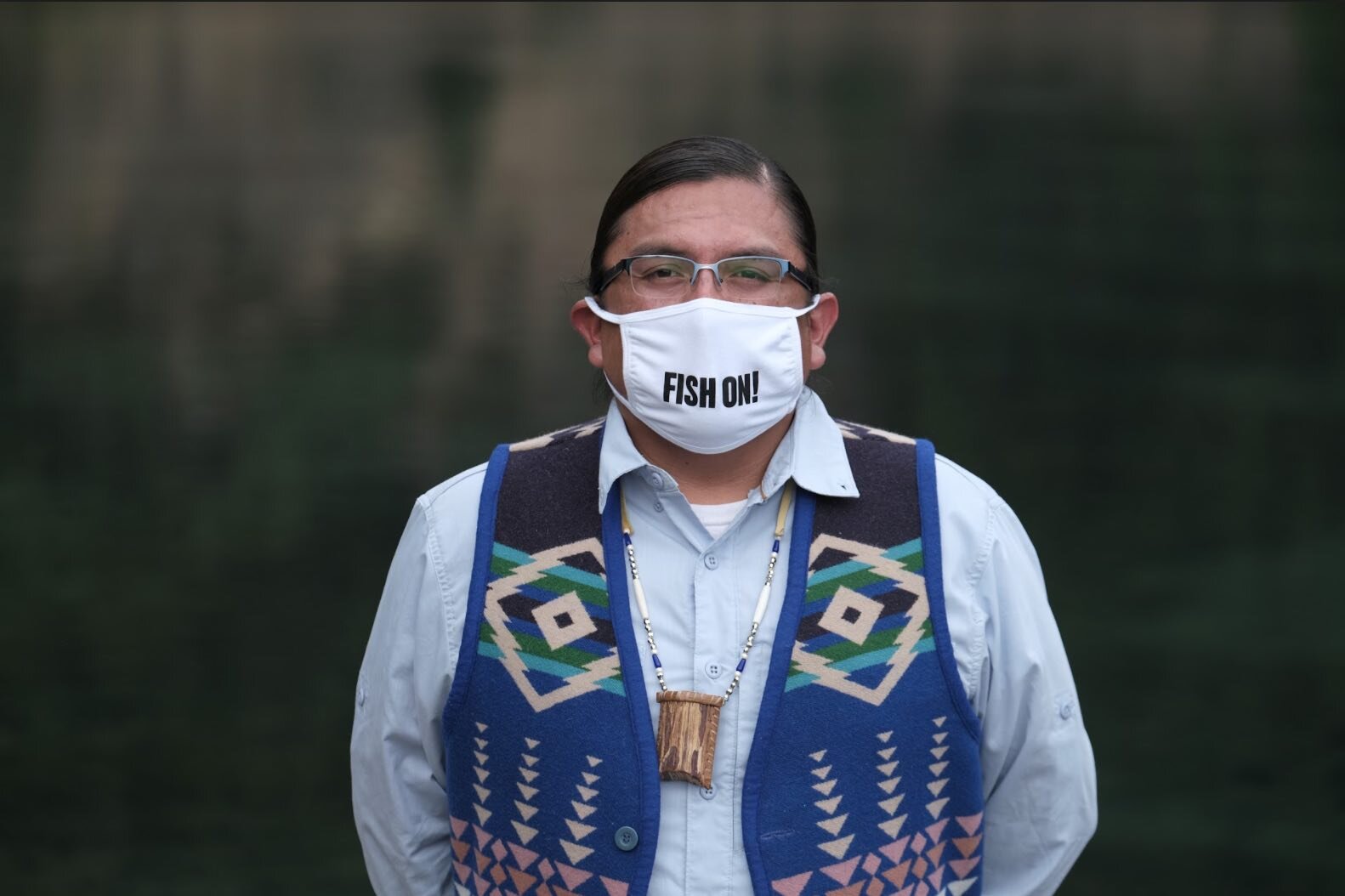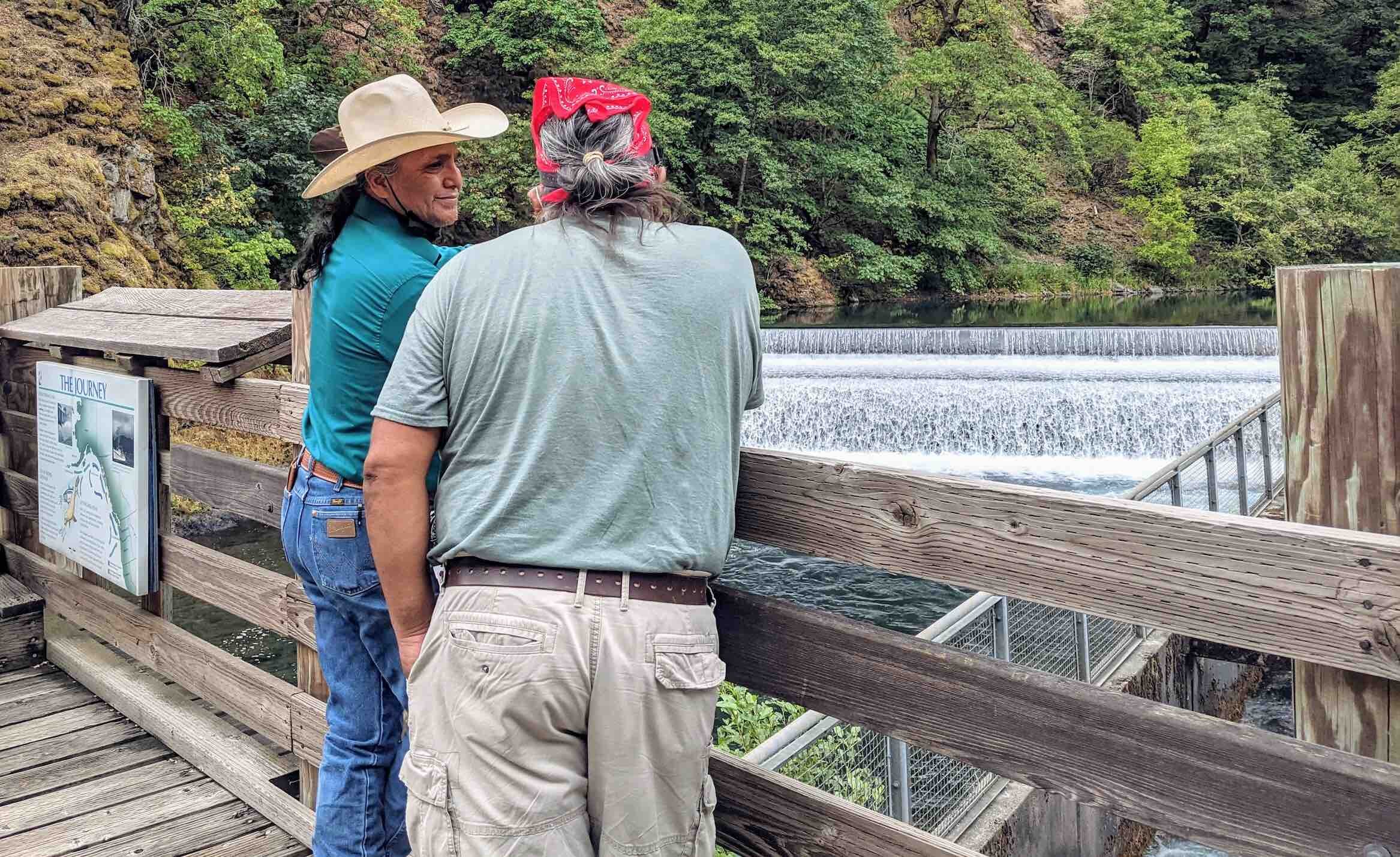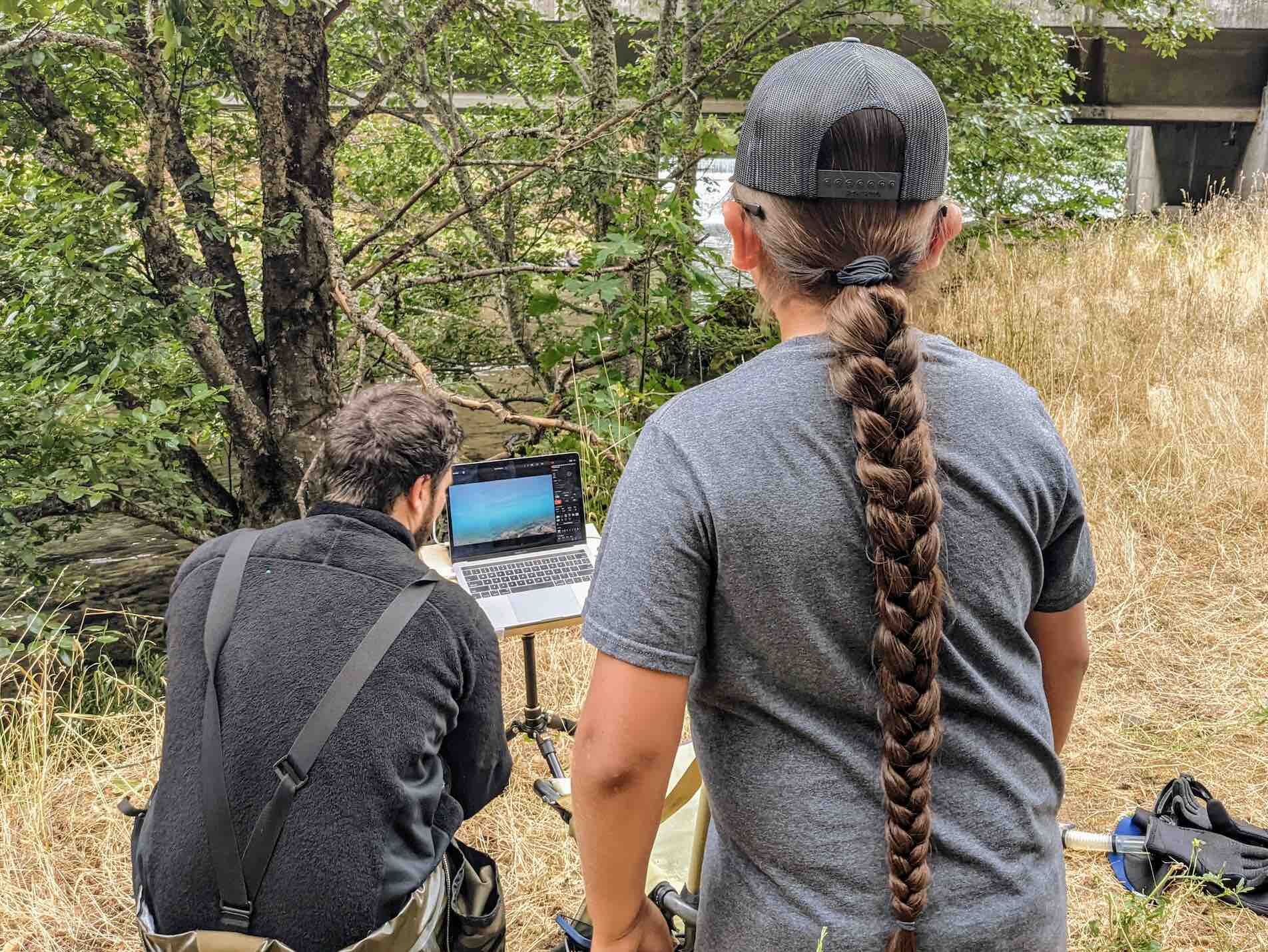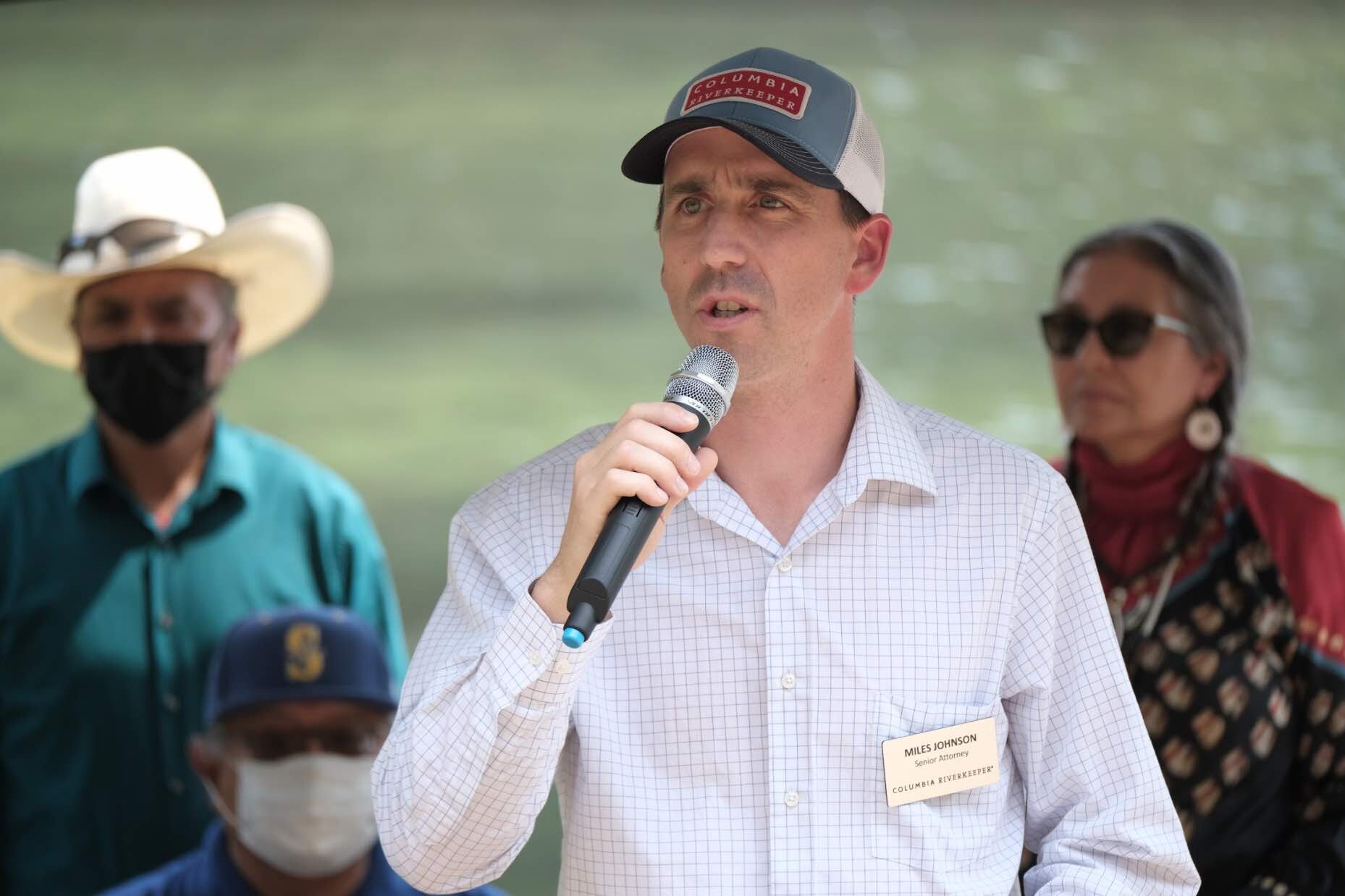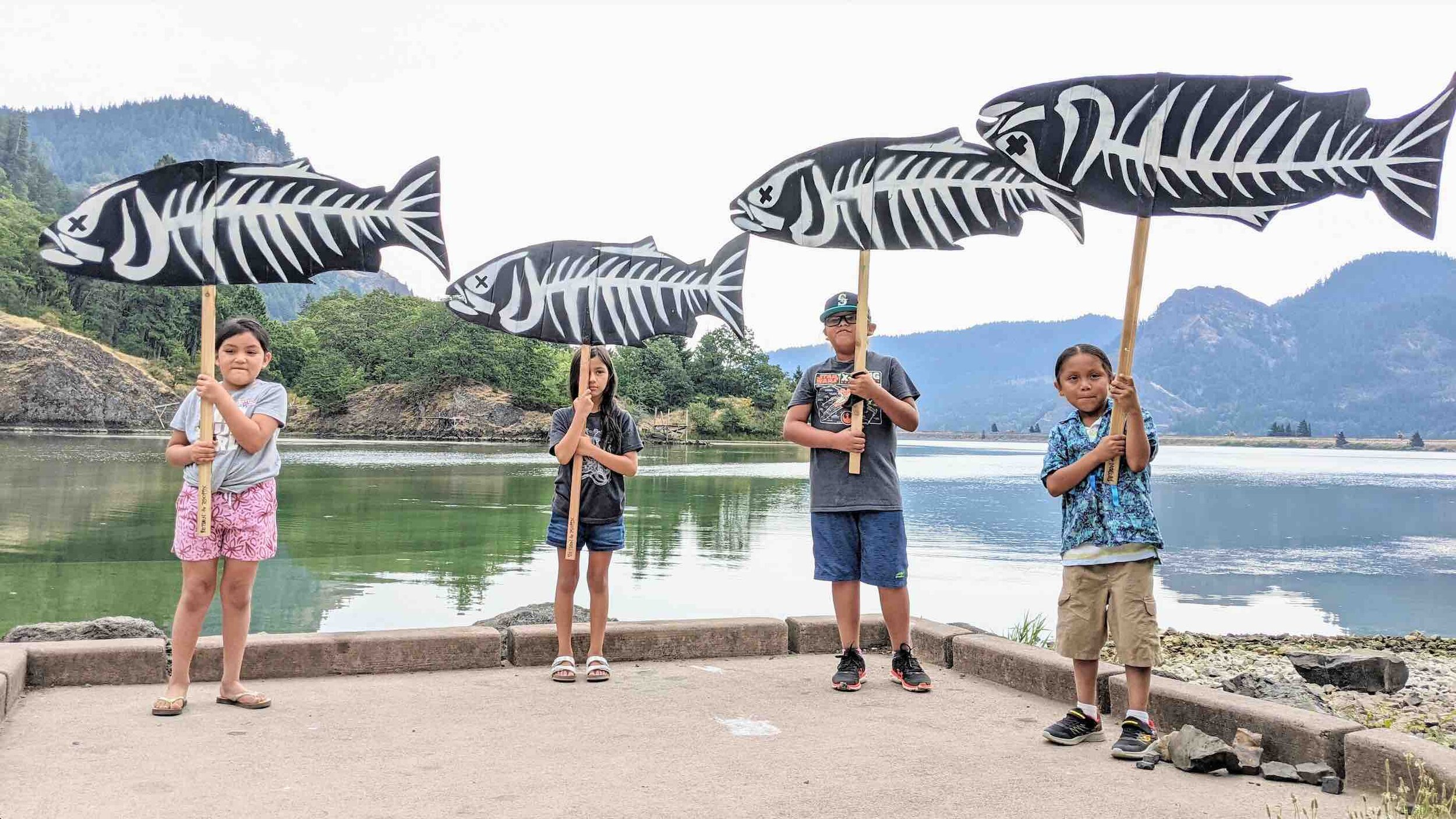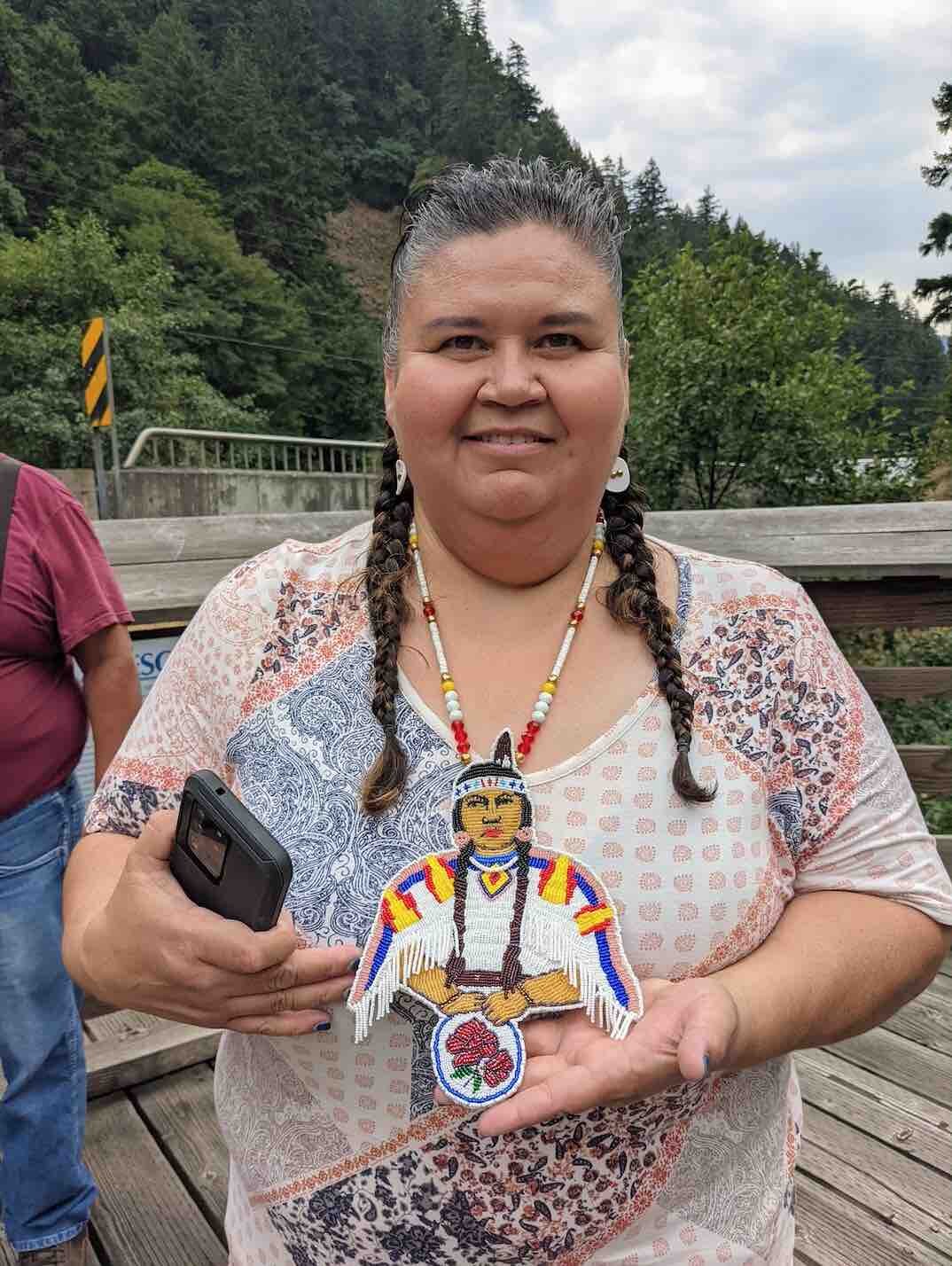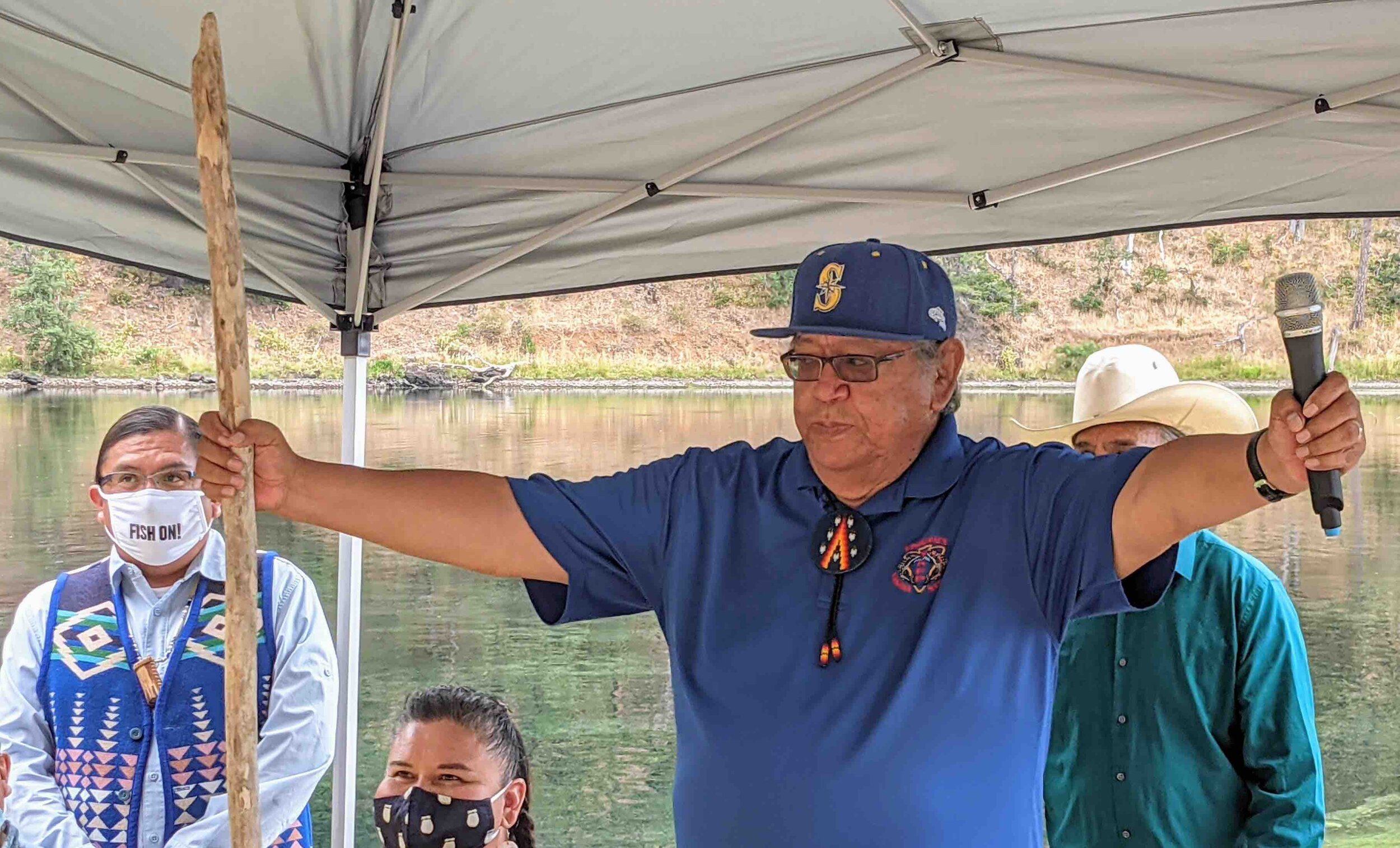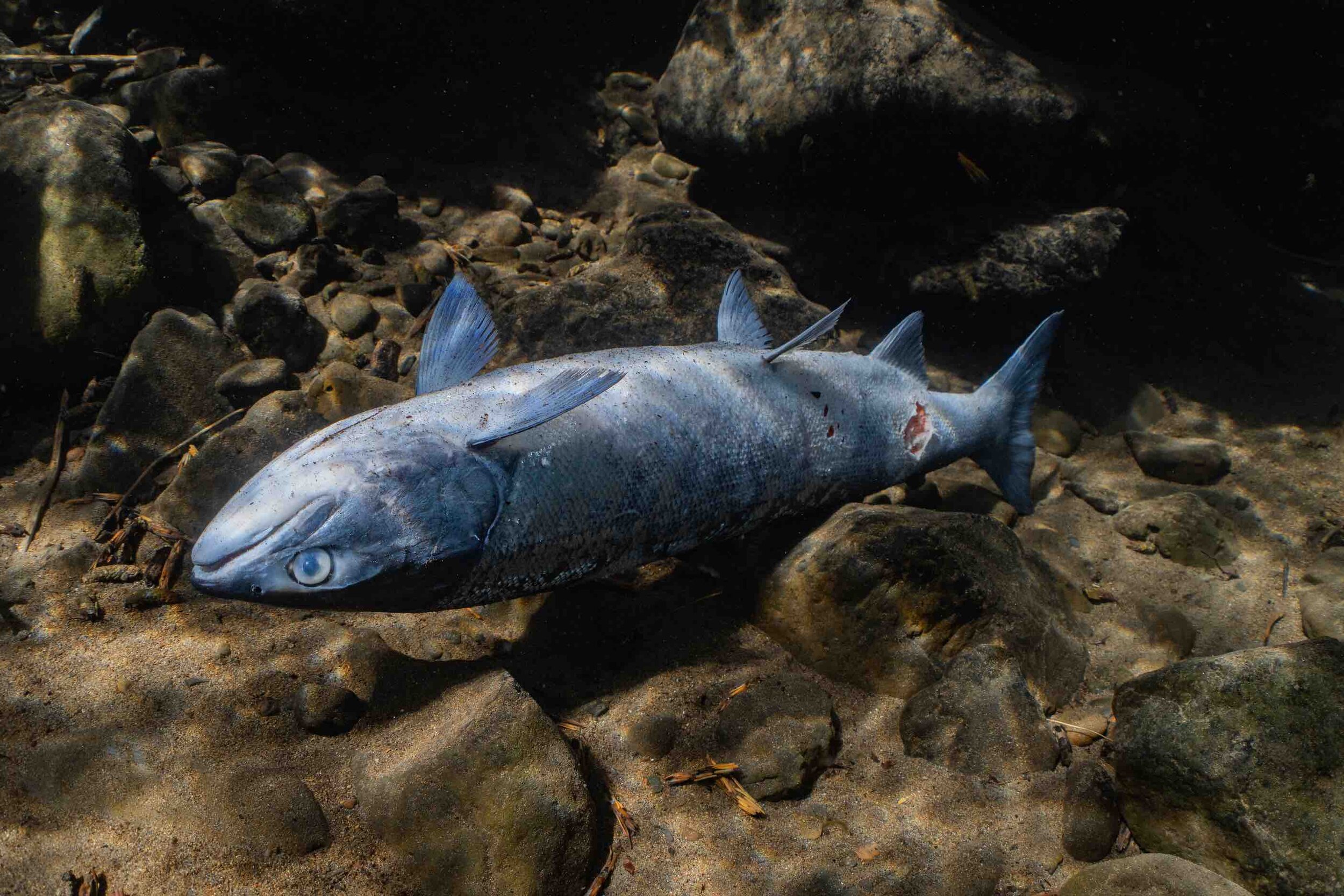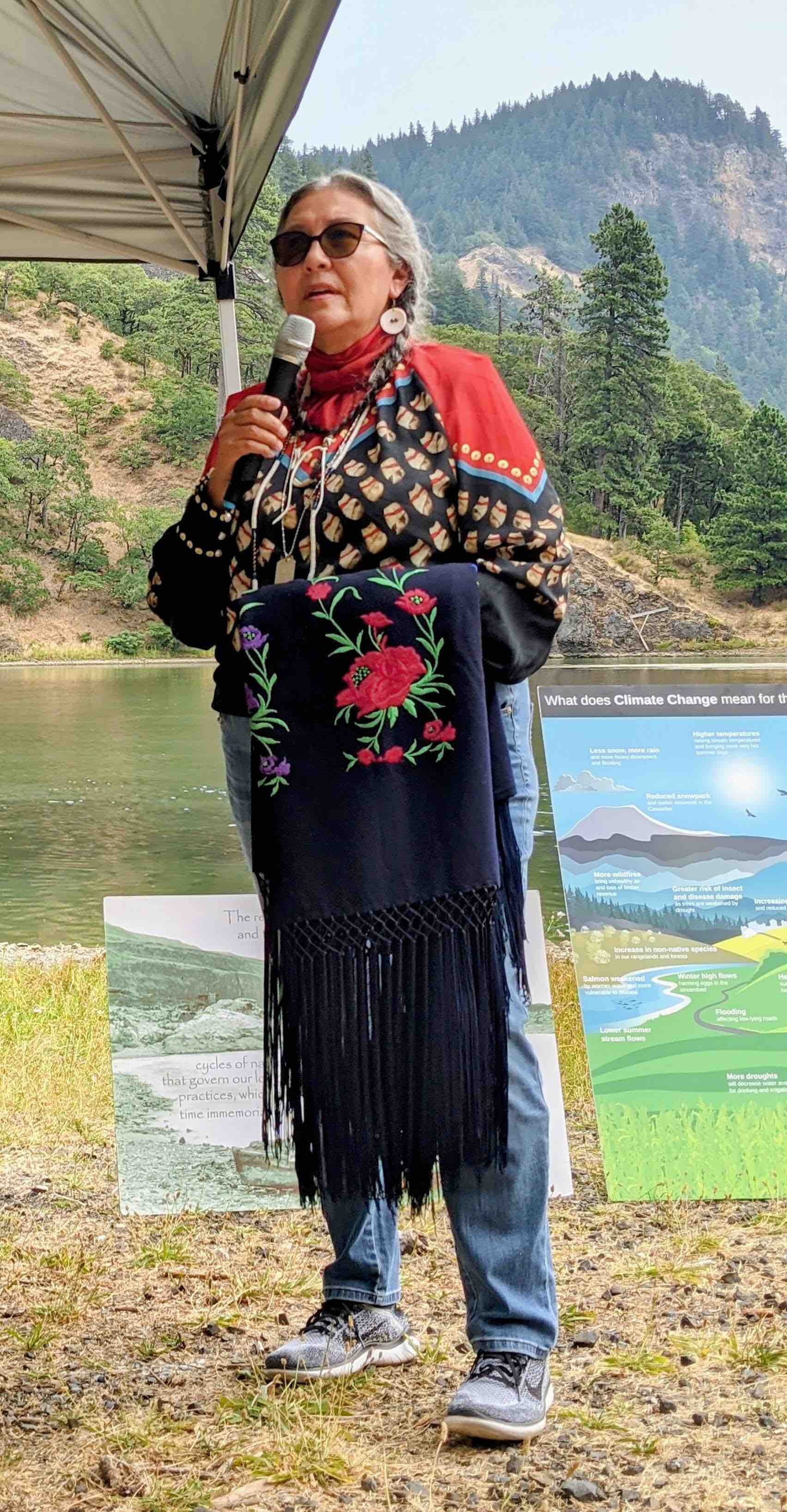Yakama Nation, Environmental Groups Hold Salmon Vigil to Raise Awareness of Salmon Die-Offs, Call for Dam Removal
Speakers gathered under a tent in the heat of the day to speak on behalf of the salmon. Behind them, a heat-related algae bloom is visible in the Little White Salmon river.
Pictured Left to Right: Gerald Lewis Yakama Nation Councilman, Jeremy Takala, Yakama Nation Councilman, Donella Miller, Yakama Nation Fisheries Program Manager, Davis Washines (standing center) Yakama Nation Fisheries Government Relations Liaison, Wilbur Slockish Jr., Hereditary Chief of the Klickitat, and Cathy Sampson-Kruse, a member of the Confederated Tribes of Umatilla Indian Reservation and a Columbia Riverkeeper board member.
On July 30th, Yakama Nation leaders, Columbia Riverkeeper, and over 40 people gathered at the mouth of the scenic Little White Salmon River to hold a Salmon Vigil. The vigil was held to raise awareness about the ongoing deaths of sockeye salmon caused by hot water temperatures in the Columbia River and its tributaries. Speakers demanded Pacific Northwest leaders like Senators Cantwell, Murray, Wyden, and Merkley support Lower Snake River dam removal and other action to cool rivers.
Many vigil goers and speakers said that dams were having an increasingly negative impact on fish runs. Several speakers called on Pacific Northwest Members of Congress to support Lower Snake River dam removal, which would cool the Snake River and help sockeye return.
Felton Jenkins, Treasurer of the FlyFisher Foundation and resident of White Salmon attended the Salmon Vigil wearing a shirt that says “Un-Dam the Klamath”.
Dams create unnaturally hot water due to huge stagnant reservoirs, and now climate change is pushing it over the edge. These fish, and others, are dying right now because the dams and climate change have made the Columbia and Snake rivers too hot," said Miles Johnson, senior attorney with Columbia Riverkeeper. "We can’t afford more talk. We are out of easy options and nearly out of time—we need our elected leaders to take action to restore our rivers before it is too late."
Those advocating for dam removal included Gerald Lewis, Yakama Nation Councilman; Jeremy Takala, Yakama Nation Councilman; Donella Miller, Yakama Nation Fisheries Program Manager; Wilbur Slockish Jr., Hereditary Chief of the Klickitat; Davis Washines, Yakama Nation Fisheries Government Relations Liaison; Cathy Sampson-Kruse, a member of the Confederated Tribes of Umatilla Indian Reservation and a Columbia Riverkeeper board member; Miles Johnson, senior attorney with Columbia Riverkeeper; and Giulia Good Stefani, a senior attorney for NRDC (Natural Resources Defense Council)
"What do I tell my grandchildren, how do you continue to give hope for the future? We carry on the best we can, but we are now at a precipice," said Cathy Sampson-Kruse, a member of the Confederated Tribes of Umatilla Indian Reservation and a Columbia Riverkeeper board member.
Standing Vigil on the Little White Salmon River. Alana Harvey age 6, Mila Gandara age 8 , Tyler Takala age 10, and Clint Takala age 6 hold signs painted to look like salmon.
One speaker called on those in power to remember that the salmon were more than just a natural and cultural resource, but also that the salmon are the original water rights holders, the ones that call the rivers home, and that they should have the right to live and thrive in their ancestral waters.
Speakers from the Yakama Nation said since the salmon could not speak for themselves, they would speak on their behalf.
“They sustain us, so it’s our responsibility to take care of them in return,” said Donella Miller, Yakama Nation Fisheries Program Manager.
Speaking On Behalf of the Salmon. Pictured: Donella Miller, Yakama Nation Fisheries Program Manager.
Photo Credit: Alex Milan Tracy
The salmon die-off taking place in the Columbia River this past month began receiving widespread attention after Columbia Riverkeeper released new underwater video footage showing heat-stressed sockeye salmon dying. The video shows sockeye with dramatic lesions and fungus, which affects fish subject to thermal stress.
Some speakers at the vigil referenced a similar event that occurred in 2015, when roughly 250,000 sockeye died in the Columbia and Snake rivers because of hot water.
Sockeye Salmon in the Columbia River Basin are classified as an endangered species and seventy-seven percent of Columbia Basin sockeye salmon populations are expected to reach quasi-extinction by the year 2025.
Scientists predict that unless significant changes are made, mass salmon death will become more common as dams and climate change continue to warm the rivers and will likely cause the extinction of Snake River sockeye.
“We all drink water, we’re all beings of the same earth,” said Miller “We can all work together for a better future...because that’s what it's going to take- everyone working together...We need to work for a healthy environment, and plan for a future without dams.”
Learn more about what you can do to help at Columbia Riverkeeper.org.
